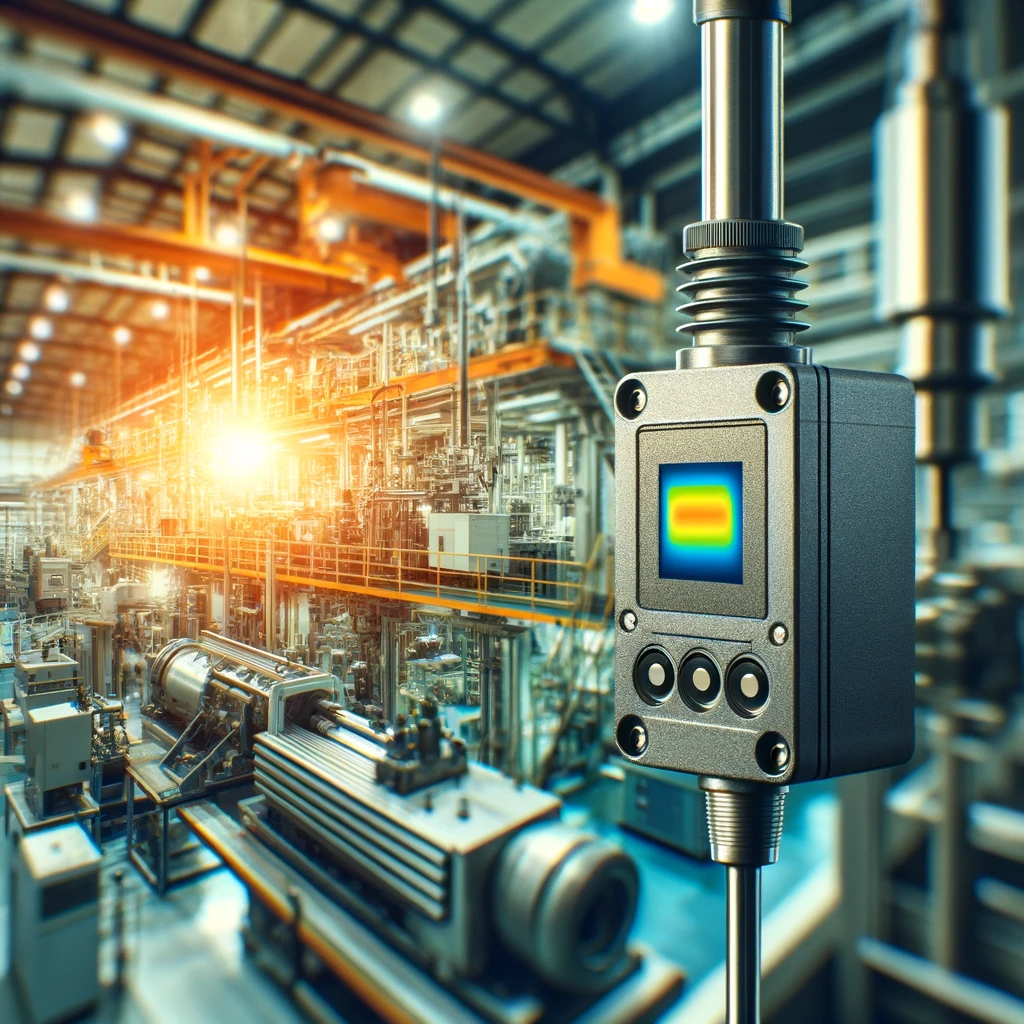
As a sensor designer, I often find myself facing the challenge of bridging the gap between different sensor protocols. It’s like trying to connect puzzle pieces that don’t quite fit together. But with the importance of interoperability in modern sensor design, it’s crucial to find a solution. In this article, I will explore the role of standardization and data exchange formats in enabling seamless integration of sensors, and the benefits of creating interoperable sensor systems.
Importance of Interoperability
As a sensor designer, I frequently encounter the crucial importance of interoperability in my work. Interoperability challenges arise when different systems or devices are unable to communicate or exchange data effectively. This can hinder the seamless integration and operation of sensors within a larger network or system. However, there are several interoperability solutions that can address these challenges. One solution is the adoption of standardized communication protocols, such as MQTT or OPC UA, which enable compatibility and seamless data exchange between diverse sensors and systems. Another solution is the use of middleware or integration platforms that facilitate the translation and transformation of data formats, ensuring interoperability across different devices and technologies. Additionally, establishing common data models and ontologies can enhance interoperability by providing a shared understanding of sensor data semantics. By addressing these interoperability challenges and implementing suitable solutions, sensor designers can ensure the efficient and effective operation of their devices within complex and interconnected systems.
Common Challenges in Sensor Design
One common challenge in sensor design is the limited availability of compatible components. This can often lead to delays in the development process and hinder the overall performance of the sensor system. To add to the complexity, ensuring sensor data accuracy is another challenge that designers face. Achieving high accuracy requires careful calibration and validation of the sensor output, which can be time-consuming and resource-intensive. Additionally, power consumption optimization is a significant concern in sensor design. Sensors need to operate efficiently to extend battery life or reduce energy consumption in applications where power is limited. Balancing the need for accurate data with power efficiency is a delicate task that requires careful consideration and optimization techniques.
Standardization in Sensor Communication
To address the challenges mentioned earlier, I will now delve into the importance of standardization in sensor communication. Sensor integration is a complex process that involves the seamless integration of various sensors into a unified system. However, without standardization in sensor communication, this process becomes significantly more challenging. Standardization ensures that different sensors can communicate effectively with each other and with other devices in the network. This is achieved through the use of communication protocols, which define the rules and formats for data exchange between sensors and other components. By implementing standardized communication protocols, sensor designers can ensure interoperability between different sensors and enable seamless integration into larger systems. Standardization in sensor communication is therefore crucial for achieving efficient and reliable sensor integration.
Bridging Different Sensor Protocols
Continuing the discussion on standardization in sensor communication, bridging different sensor protocols is a crucial aspect of achieving interoperability in modern sensor design. Sensor integration requires protocol compatibility to ensure seamless communication and data exchange among sensors of various types and manufacturers. This is essential for creating a cohesive and efficient sensor network that can provide accurate and reliable data for analysis and decision-making. To bridge different sensor protocols, several strategies can be employed:
- Developing middleware solutions that can translate and convert data between different protocols.
- Implementing standard communication interfaces, such as MQTT or RESTful APIs, that can be used by sensors regardless of their underlying protocols.
- Utilizing protocol translation gateways that can act as intermediaries between sensors with different protocols.
- Adopting industry standards for sensor communication, such as OPC-UA or DDS, that provide a common framework for interoperability.
Role of Data Exchange Formats
When considering the role of data exchange formats in modern sensor design, it is crucial to highlight the importance of standardization. Standardized data formats enable seamless interoperability between different sensors and systems, allowing for efficient communication and integration. By ensuring compatibility across various platforms, data exchange formats facilitate the smooth transfer and analysis of sensor data, ultimately enhancing the overall performance and effectiveness of sensor networks.
Importance of Standardization
In my experience as a sensor designer, utilizing standardized data exchange formats is crucial for achieving interoperability. Standardization challenges and the need for efficient data exchange protocols are key considerations in sensor design. Here are four reasons why standardized data exchange formats are of utmost importance:
- Simplifies Integration: Standardized formats ensure compatibility between different sensor systems and platforms, enabling seamless integration and reducing development time.
- Enhances Collaboration: With standardized data exchange formats, sensor designers can easily share and analyze data across different applications, promoting collaboration and innovation.
- Facilitates Scalability: By adhering to standardized formats, sensor systems can be easily scaled up or down, allowing for interoperability and flexibility in various environments.
- Enables Future Compatibility: Standardization ensures that sensor data can be easily accessed and utilized in future systems and technologies, avoiding the need for costly and time-consuming data migration.
Impact on Compatibility
To further emphasize the importance of standardized data exchange formats, one key aspect to consider is their impact on compatibility. In today’s interconnected world, data sharing between different platforms is essential for seamless integration and interoperability. Cross platform compatibility ensures that data can be easily exchanged and interpreted, regardless of the system or device used. This is particularly crucial in the context of modern sensor design, where data from multiple sensors needs to be combined and analyzed. By adopting standardized data exchange formats, such as JSON or XML, sensor manufacturers can ensure that their data can be easily shared and utilized across different platforms, reducing the barriers to integration and enabling more efficient and effective data analysis.
| Column 1 | Column 2 | Column 3 | Column 4 |
|---|---|---|---|
| Standard | Advantages | Disadvantages | Example |
| JSON | Lightweight | Lack of schema | {“name”:”John”, “age”:30, “city”:”New York”} |
| XML | Structure | Verbosity | John30New York |
| CSV | Simplicity | Limited data types | John,30,New York |
Benefits of Seamless Integration
Furthermore, by utilizing standardized data exchange formats, I can ensure seamless integration and interoperability in modern sensor design. The benefits of this approach are numerous and play a crucial role in improving efficiency. Here are four key advantages:
- Streamlined Communication: Standardized data exchange formats enable sensors to communicate seamlessly with each other and with other systems, eliminating the need for complex translations or custom integrations.
- Simplified Integration: With standardized formats, integrating sensors into existing systems becomes much easier, reducing the challenges in implementation and saving valuable time and resources.
- Increased Flexibility: By adhering to common data exchange formats, sensors can be easily swapped or upgraded without disrupting the entire system, allowing for greater flexibility in adapting to changing requirements.
- Enhanced Interoperability: Standardized formats promote interoperability between different sensor types and manufacturers, enabling a diverse range of sensors to work together harmoniously.
Enabling Seamless Integration
To enable seamless integration in modern sensor design, it is crucial to prioritize compatibility between different systems. By ensuring that sensors and devices are capable of communicating and exchanging data effectively, we can overcome the challenge of data silos and maximize the potential of interconnected systems. This compatibility allows for a streamlined flow of information, enabling real-time analysis and decision-making, ultimately leading to more efficient and effective sensor design.
Benefits of Compatibility
Enabling seamless integration, the compatibility of modern sensors offers numerous benefits. With the ability to seamlessly integrate with existing systems, these sensors overcome the challenges in implementation and remove the barriers to compatibility. The advantages of compatibility are as follows:
- Enhanced efficiency: Compatible sensors simplify the integration process, allowing for faster and more efficient deployment. This leads to improved operational productivity and reduced downtime.
- Cost savings: By eliminating the need for extensive modifications or replacements, compatibility reduces costs associated with system upgrades and maintenance.
- Scalability: Compatible sensors enable easy expansion or addition of new components, facilitating scalability and adaptability to changing requirements.
- Interoperability: The compatibility of modern sensors promotes interoperability, enabling different systems to communicate and exchange data seamlessly, leading to better collaboration and decision-making.
Overcoming Data Silos
In the realm of modern sensor design, I will now delve into the subtopic of overcoming data silos and enabling seamless integration. Data integration is a critical aspect of sensor design as it allows for the consolidation and analysis of data from multiple sources. However, technical barriers often hinder this process, leading to data silos and fragmented information. To overcome these barriers, various strategies can be implemented. Firstly, standardization of data formats and protocols is essential to ensure compatibility between different systems. Additionally, the use of application programming interfaces (APIs) allows for the seamless exchange of data between different software applications. Furthermore, the adoption of cloud-based platforms can facilitate the storage and processing of large volumes of sensor data. By overcoming these technical barriers, the integration of data from various sensors becomes more efficient and reliable, enabling better analysis and decision-making.
Benefits of Interoperable Sensor Systems
With interoperable sensor systems, I can seamlessly integrate multiple sensors into my design. This not only improves efficiency but also reduces costs in several ways:
- Streamlined Installation: Interoperability allows for easy plug-and-play integration, saving time and effort during installation.
- Centralized Data Management: By enabling sensors to communicate and share data, interoperability eliminates the need for separate data silos and manual data transfer, improving data management efficiency.
- Enhanced Scalability: Interoperable systems can accommodate the addition of new sensors without major modifications, reducing the need for costly upgrades.
- Improved Maintenance and Troubleshooting: With interoperability, I can remotely monitor and diagnose sensor performance, enabling proactive maintenance and minimizing downtime.
Future Trends in Sensor Interoperability
I look forward to the future advancements that will further bridge the gap in sensor interoperability. As technology continues to evolve, the field of sensor design is constantly advancing, and with it, the possibilities for improved interoperability. One key area of focus for future advancements in sensor interoperability is the development of emerging technologies. For example, the Internet of Things (IoT) is expected to play a significant role in connecting different sensors and enabling seamless communication between them. Additionally, advancements in wireless communication protocols, such as 5G, will provide faster and more reliable data transmission, further enhancing interoperability. Furthermore, the integration of artificial intelligence and machine learning algorithms into sensor systems will enable real-time data analysis and decision-making, leading to more efficient and effective interoperability. Overall, the future holds great promise for sensor interoperability, driven by these emerging technologies and advancements.




